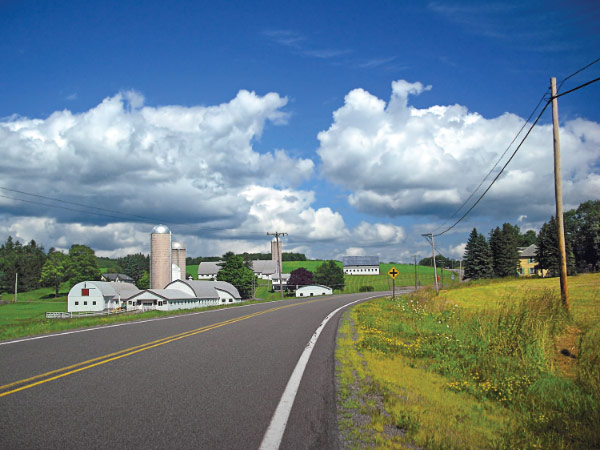New National IPM Road Map Sets Priorities for the Science
 |
|
Photo by Nicholas A. Tonelli, CC BY 2.0 |
The latest edition of the National Road Map for Integrated Pest Management was released in September, marking the first significant update to the document since 2013.
The update is the culmination of a year-long review by the Federal Integrated Pest Management Coordinating Committee, incorporating input and edits from the Northeastern IPM Center and the other three regional centers.
The Road Map, first introduced in 2004, is updated at non-fixed intervals, as needed, to reflect the evolving science, practice, and nature of IPM. Its goal is “to increase adoption, implementation, and efficiency of effective, economical, and safe pest-management practices, and to develop new practices where needed.”
Starting from a basic set of definitions and principles that underscore IPM’s core mission of minimizing pest damage, risk, and the evolution of pest resistance, the Road Map lays out a comprehensive set of functional and priority areas that systematically describe and support strategic considerations and goals, reflecting the collaborative and highly interdisciplinary nature of IPM itself.
“The National IPM Road Map is an important policy tool that helps us frame our priorities and maximize the impact we can achieve with the resources at our disposal,” said Deborah Grantham, director of the Northeastern IPM Center. “It provides some guidance as we distribute funding through our Partnership Grants program, maintaining strategic alignment between the Center’s work and the ever-evolving national vision for IPM.”
The Road Map seeks to foster information exchange and coordination among a host of stakeholders, constituencies, and subject-matter experts, including researchers, educators, service providers, and IPM practitioners. It is built on a model of iterative and flexible improvement that acknowledges the continuous evolution of both knowledge and challenges around IPM. This evolution, in turn, necessitates a dynamic and agile approach to methodologies and implementation. The Road Map provides a framework for documenting and describing current realities, implications, and knowledge of IPM.
“The Road Map underscores how IPM is still highly relevant today in both agricultural and community settings,” said Jennifer Grant, director of the New York State IPM Program. “Whether dealing with bed bugs or spotted lanternfly, IPM’s adaptive framework helps people solve problems. The Road Map helps federal and state agencies, as well as university and extension personnel, to be on the same page with current IPM best practices.”
The Road Map defines, prioritizes, and articulates pest management challenges across many landscapes, and helps identify priorities for IPM research, technology, education, and implementation. In addition to discussing challenges, it identifies and describes IPM focus areas, approaches, and strategies for strengthening research and development, education and communication, implementation and evaluation, and leadership and coordination.
The document also includes several appendices that discuss examples of IPM programs in the context of several federal agricultural and environmental agencies, along with the U.S. Air Force.
This newest version of the National Road Map for Integrated Pest Management is available as a PDF document on the United States Department of Agriculture (USDA) website. View or download the file by visiting http://neipmc.org/go/YhJR.
A version of this article originally appeared in the Western IPM Center’s e-newsletter, published by Steve Elliott.
The Northeastern IPM Center promotes integrated pest management for reducing risks to human health and the environment. If republishing our news, please acknowledge the source (“From Northeast IPM Insights”) along with a link to our website.
